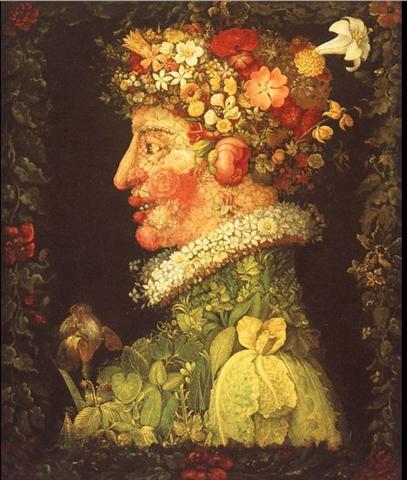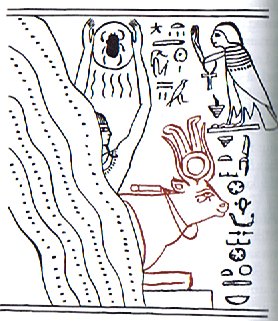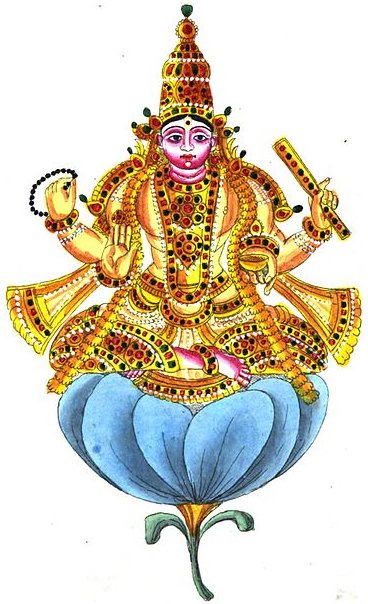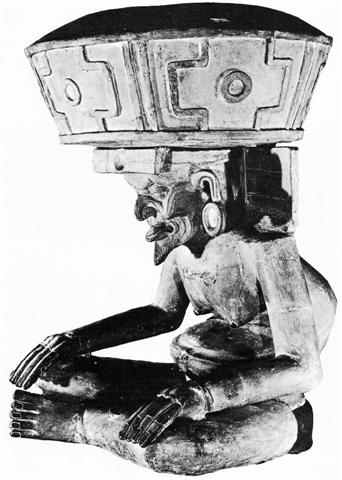Once again. At the equinoxes the Sun moved across from one hemisphere to the other and the quick arrival of spring Sun made everyone happy.
North of the equator a pair of days in early May could have been - by the force of tradition - the season for 'separating Sky and Earth':
This happy season when Mother Nature returned to life was, however, quite short, and evidently it ended in June when the summer heat stopped the intensive growth of her greenery. June 10 (161) - May 1 (*41) = 15 + 25 = 40 days. South of the equator the Fishhook of Maui could have been alluded to where Sirius rose together with the Sun, in the last day of June. The Gregorian calendar was beginning with ºJanuary 1 and 180 days later was ºJune 30:
At the time of Bharani this was day 144 = 12 * 12 and at the time of rongorongo it was day 185 (= 144 + 41). In Roman times it had been day 78 (= 6 * 13) after 'March 21 and at the time of the Bull it had been day *41 (= *78 - *23). The repeated occurrence of number 41 was clearly no coincidence, because it signified 'the place of birth'.
... Bharani ... is the second nakshatra in Hindu astronomy, corresponding to 35, 39, and 41 Arietis. In Jyotisha, Bharani is ruled by Shukra (the planet Venus).
Also, it is classified as a Cruel or Active nakshatra, meaning that, under electional astrological beliefs, works of a harmful or deceptive nature are best conducted while the moon is in Bharani. Bharani is seen as being under the domain of Yama, the god of death or Kālī. The symbol of Bharani is the Yoni, a representation of the female sexual organ ...
At the time of Bharani (the place of birth) the date "June 10 (Maro 10) was where the Explorers climbed up the hill (carapace) at μ Cancri and 5 days later Kuukuu had finished his agricultural work by heaping up earth over his yam tubers. ... Midsummer is the flowering season of the oak, which is the tree of endurance and triumph, and like the ash is said to 'court the lightning flash'. Its roots are believed to extend as deep underground as its branches rise in the air - Virgil mentions this - which makes it emblematic of a god whose law runs both in Heaven and in the Underworld ... The month, which takes its name from Juppiter the oak-god, begins on June 10th and ends of July 7th. Midway comes St. John's Day, June 24th, the day on which the oak-king was sacrificially burned alive. The Celtic year was divided into two halves with the second half beginning in July, apparently after a seven-day wake, or funeral feast, in the oak-king's honour ...
The head of Hercules (Ras Algethi, α) culminated at midnight in the day when the Sun reached Al Tarf (End, β Cancri), and then followed the day of the Bright Fire.
In order to obtain a new fire (after the old one had been securely finished) the proper method should have been to transfer a part from the old one. This method had proven to work well with tubers etc. ... The skulls of the chiefs are for the chicken, so that thousands may be born' (te puoko ariki mo te moa, mo topa o te piere) ... As long as the source of mana is kept in the house, the hens are impregnated (he rei te moa i te uha), they lay eggs (he ne'ine'i te uha i te mamari), and the chicks are hatched (he topa te maanga) ... First the old fire was extinguished and then a new fire was born through his mother who delivered a child into which the spirit of the old one entered. ... And then she looked in her hand, she inspected it right away, but the bone's saliva wasn't in her hand. It is just a sign I have given you, my saliva, my spittle. This, my head, has nothing on it - just bone, nothing of meat. It's just the same with the head of a great lord: it's just the flesh that makes his face look good. And when he dies, people get frightened by his bones. After that, his son is like his saliva, his spittle, in his being, whether it be the son of a lord or the son of a craftsman, an orator. The father does not disappear, but goes on being fulfilled. Neither dimmed nor destroyed is the face of a lord, a warrior, craftsman, an orator. Rather, he will leave his daughters and sons. So it is that I have done likewise through you. Now go up there on the face of the earth; you will not die. Keep the word. So be it, said the head of One and Seven Hunaphu - they were of one mind when they did it ... At the time of rongorongo the Tegmine (Covered, ζ Cancri) star had moved ahead in the year to July 22 (22 / 7).
Perhaps we should count 15 days back in time from July 22 (203) because there were 15 days from May 1 to May 16.
At the time of rongorongo day 203 - 15 = 188 (July 7) was at Ga2-14, where a mago (shark) has been drawn with a straight line inside his head ending abruptly at the summit (sun-mit). ... The month, which takes its name from Juppiter the oak-god, begins on June 10th and ends of July 7th ... Furthermore, we can find day 214 (as in February 14 = All Hearts' Day) at Ga3-11, where a heavy head (like a heart) evidently could be hanging down towards the bottom, followed by day *135 = *500 (alluding to May 15 at the time of rongorongo).
This was the place for Acubens and in Ga3-13 a kind of new (and pregnant) season evidently opened up (vaha mea).
|
|||||||||||||||||||||||||||||||||||||||||||||||||||||||||||||||||||||||||||||||||||||||||||||||||||||||||||||||||||||||||||||||||||||||||||||||||||||||||||||||||||||||||||||||||||||||||||||||||||||||||||||||||||||||||||||||||||||||||||||||||||||||||||||||||||||||||||||||||||||||||||||||||||||||||||||||||||||||||||||||||||||||||||||||||||||||||||||||||||

















